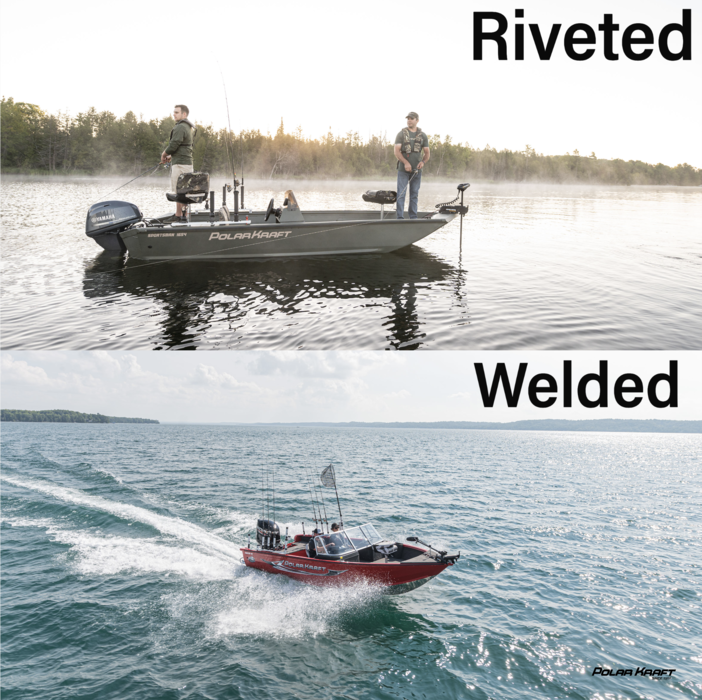
Both have their place.
People will debate, often times based on the type of boat they or their friends have had in the past, whether welded or riveted hulls are superior. We spoke with Don Kirby, a veteran angler and formerly a manager for one of the largest retail boat dealers in the Midwest, what he thought about the topic.
“For sure, both hull types have their place,” Kirby said. “The old saying along the lines of ‘airplanes are riveted, that's good enough for me’ is not necessarily applicable to boats, since there aren't any surfaces on an airplane that are regularly going to come up against gravel, rocks, or sandy beaches!”
Kirby has owned, and sold, both riveted and welded hulls.
“I have had both, over the years,” he said. “ And I've also used a variety of riveted and welded hulls, as rentals in Canada for example, or while fishing/hunting with others.”
Currently, Kirby is using a riveted boat, but he didn’t choose it because of the hull type.
“My personal rig currently is a riveted model,” Kirby said. “That said, I didn't choose it for what was ‘on the bottom’ per se, but more for the features it had on the top-side of the hull. I will note that my riveted hull has zero leaks after more than a decade of steady use as a fishing, hunting, and family fun platform, but I also don't abuse it.”
Some people think that a welded hull is better when fishing extremely skinny water because the surface of a welded hull is smoother.
“The smoother hull can certainly make a big difference - the far extreme version of this would be duck-hunting specialty ‘mud-boats’ that can run nearly on the land, when run with a surface drive style motor,” he said. “For most applications the performance variation between welded or riveted is relatively small though.”
It seems that ultimately, welded or riveted, is more or a personal preference.
“I think that's exactly it,” he said. “No one boat can perfectly do everything, for everyone, at every time. There are just too many variables out there. I've always told boat buyers to think about what they like doing most, most often, and seek out a combination of bottom and top-side features and construction that matches your needs and budget, and go from there.”